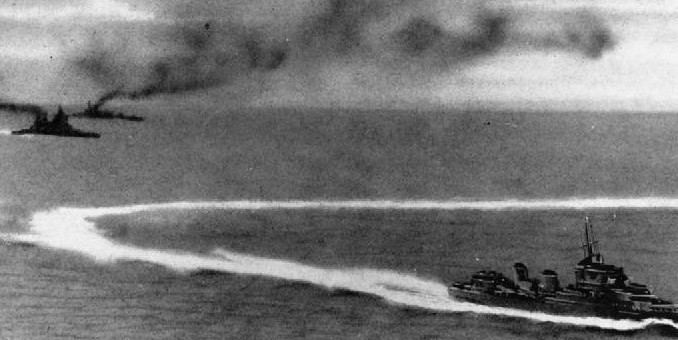
As the situation in the Far East deteriorated during the second half of 1941, the British government looked at ways to reinforce their colonies in the Pacific. One of the jewels of the British Empire was the colony of Singapore, an island city-state at the tip of the Malayan Peninsula. Here the British had built a superb naval base, but had never assigned major fleet units to be permanently based there. With the sinking of the German surface raider Bismarck, and with US Navy warships taking on some of the burden of escorting convoys across the Atlantic, the Royal Navy finally felt able to detach heavy units of the Home Fleet for service in the Far East. A powerful naval squadron consisting of a battleship, a battle cruiser and an aircraft carrier, plus escorts, was to be assembled and dispatched to Singapore under the command of Admiral Thomas “Tom Thumb” Philips.
The battleship assigned to Force G, as the flotilla was named, was the Prince of Wales – a veteran of the May 1941 chase of the German battleship Bismarck, she had not acquitted herself well during this action. Having only just entered commission under Capt John C. Leach her crew was not fully trained and was short of practice, and her spotters mistook the cruiser Prinz Eugen for the larger German vessel. This mistake may have doomed the battlecruiser Hood, which duelled the Bismarck’s guns alone with disastrous consequences, as she suffered a hit which caused a catastrophic magazine explosion. Prince of Wales suffered a mechanical breakdown and soon broke off the action, leaving other elements of the Home Fleet to eventually conclude the chase and sink the Bismarck. Based partly on this performance the Prince of Wales had begun to develop a reputation as a ‘Jonah’, or an unlucky ship.
The battlecruiser Repulse, commanded by Capt William G. Tennant, was an older design, having been commissioned in 1916 when she was the fastest capital ship afloat, capable of 32 knots. Repulse saw some action during the First World War and, being one of the newer battlecruisers in the Royal Navy, survived the reductions in naval strength mandated by the inter-war arms limitation treaties. As the European War opened in 1939 she was to be found escorting convoys and hunting for German surface raiders in Norwegian waters. She was also assigned to the Bismarck operation but was forced to abandon the chase due to lack of fuel. Her speed made her an ideal consort for the Prince of Wales, and so she was assigned to Force G along with the destroyers Electra, Express, Encounter and Jupiter. The aircraft carrier Indomitable had been due to join Force Z but she struck a reef during sea trials in the Caribbean, and so was sent back to drydock for repairs. Force G would sail to the Far East without dedicated air cover.
Repulse was already stationed in the Indian Ocean when Prince of Wales departed from Scotland to join her on the 25th of October, 1941. The battleship called at Freetown, Sierra Leone and Cape Town, South Africa before meeting Repulse at Colombo, in Ceylon. From there the newly united Force G, soon renamed Force Z, set sail for Singapore, where they arrived on the 2nd of December. Both British ships equipped with High Angle Control System for directing anti-aircraft fire, which had proved relatively successful in the Mediterranean. However, the tropical conditions encountered by the force during its voyage to the Far East had damaged the radars on both ships and degraded the anti-aircraft ammunition in the ships magazines. Encounter and Jupiter had suffered equipment failures during the voyage and were immediately sent for repair.
In preparation for their planned southern advance, the Japanese Navy had stationed the 22nd Air Flotilla, consisting of the Genzan and Mihoro kokutai with their G3M land-based bombers, in southern Indochina. In response to the arrival of Force Z half of the crack Kanoya Ku with newer G4Ms was detached from the Philippines invasion force to provide additional anti-ship firepower. When the war broke out these units were initially used as conventional bombers to hit the city of Singapore in a series of night raids. Reconnaissance flights were made over the naval base which revealed the presence of the big warships.
Force Z Sets Sail
When the war began and the Japanese landings at Kota Bharu were discovered, Admiral Philips decided to sortie his ships to attack the invasion flotilla. Departing Singapore late on the evening of the 8th of December, Force Z headed north. Assigned to fly air cover was the Royal Australian Air Force’s 453 Squadron, with several Brewster Buffalo fighters. They could not hope to maintain a permanent air patrol over the ships, but they could provide on-call support during daylight hours. Early on the 9th two Japanese reconnaissance planes overflew but did not see Force Z, but in the early afternoon the submarine I-65 spotted the force and began to follow it, radioing position reports for the rest of the day. E13A floatplanes from the cruisers escorting the invasion force likewise found the British fleet, which soon abandoned plans to attack the landing grounds and instead turned south to run for home. The 22nd Air Flotilla was in the process of bombing-up for another raid on Singapore, but this process was halted and instead the bombers were loaded with Type 91 aerial torpedoes – a process that was not completed until nightfall of the 9th.
Early on the 10th Philips received reports (later revealed to be false) of a Japanese landing at Kuantan, halfway down the Malayan Peninsula. He set course for the area hoping to catch Japanese shipping in the area. This course change meant that Force Z was not initially discovered by a reconnaissance flight conducted by 10 G3Ms of the Genzan Ku – these ended up flying far to the south of the British ships without discovering them. Another submarine, I-58, spotted the British an attempted torpedo attack on the Repulse failed to score a hit. A Supermarine Walrus floatplane was launched from Prince of Wales at dawn to carry put a reconnaissance of the beaches at Kuantan. The Walrus could see no sign of enemy activity, nor could the ships of Force Z when they came within sight of land. Soon afterwards the destroyer Tenedos, which had been detached during the night due to lack of fuel and was on her way back to Singapore, reported that she was under attack by enemy bombers.
The aircraft of the 22nd Air Flotilla had begun to take off at 0500, led by a small reconnaissance force from the Genzan Ku. In all 94 bombers were on their way south to attack Force Z by 0800, 51 of them armed with torpedoes, the rest with bombs. One of the reconnaissance aircraft, having flow far south of Force Z’s position, came across the Tenedos and dropped a pair of bombs which missed. Soon afterwards 9 bomb-armed G3Ms of the Genzan Ku attacked the same ship, but likewise badly missed. Tenedos was then able to make it to Singapore without being molested further. The other bombers continued on their flight south, some coming within visual range of Java and Sumatra having missed their intended prey, before turning round to sweep back north for Indochina.
One of the remaining reconnaissance bombers, piloted by Ens. Masato Hoashi, had completed its outbound leg and was making a sweep up the Malayan coast when he came across the Prince of Wales and Repulse. He immediately reported the position and course of the ships in code, but was ordered to re-broadcast in plain language so that the attack force could home-in on his position. Whilst Hoashi remained on station the bombers, short on fuel and unable to make a coordinated attack, made for the British fleet in small groups that arrived over a period of two hours.
The Attack Begins
The British had spotted Hoashi’s G3M and were all at Action Stations, with crews manning all guns. The first group of bombers to arrive were eight bomb-armed G3Ms of the Mihoro Ku under Lt Yoshimi Shirai, which commenced a bombing run on Repulse at 1113. The battlecruiser had worked up to 25-knots and was manoeuvring, so she only sustained one minor hit aft in the aircraft hangar which started a small fire. The British gunners meanwhile had managed to damage five of the attackers.
Next to arrive on the scene, 10 minutes after the first attack, were 17 more G3Ms of the Genzan Ku – all of which were armed with torpedoes. Nine of these, led by Lt Kaori Ishihara, peeled off to attack the Prince of Wales. All 9 ‘fish’ were dropped around 1,000 metres from the battleship, but Captain Leach had already started to turn his ship away. A single bomber was brought down by anti-aircraft fire with others being damaged. Then Prince of Wales seemed to ‘bounce three or four times’, and a terrible vibration shook the ship – one of the Type 91s had exploded near the port-outer propeller shaft, ruining the bearings there and allowing thousands of tons of water to enter the ship. The remaining 8 G3Ms under Lt Sadao Takai, plus 8 more torpedo-armed G3Ms from the Mihoro Ku led by Lt Takahashi which arrived at the same time, went after the Repulse but Captain Tennant expertly turned his ship away from the torpedoes and ‘combed’ their tracks. None of the sixteen Type 91s scored a hit. Neither did a second round of bombs from Shirai’s high level squadron.
Half an hour after the first torpedo attack, and with Prince of Wales slowed to 15 knots and suffering electrical problems, LtCdr Miyauchi’s veteran Kanoya Ku arrived with 26 torpedo armed G4Ms. Low on fuel 6 of the Mitsubishis quickly pressed home their attack from very close range – 500 metres – against the sluggish flagship. Unable to avoid the pattern, Prince of Wales was hit by 4 torpedoes on her starboard side. These caused additional flooding and left just one of the battleship’s four engines operational. She was doomed.
The remaining twenty aircraft concentrated on Repulse. Several under Lt Nabeta launched a long range attack on the port side of the battlecruiser, dropping their fish from over 2,000 metres away. In manoeuvring to avoid these Captain Tennant put his ship squarely into a pattern of three more torpedoes dropped from the starboard side, and one of these found its mark. The damage was not serious but some flooding occurred. Then, Repulse’s luck finally ran out. Lt Iki’s squadron of 9 Kanoya G4Ms executed a superb split attack, with 6 bombers attacking from the starboard and the remainder from the port side. Although one of the bombers was shot down in a spectacular explosion, all three torpedoes aimed at Repulse’s port side hit home. Having much less extensive compartmentalisation the battlecruiser immediately began to take on a heavy list, and her rudder jammed. The old battlecruiser was obviously beginning to sink, and ‘abandon ship’ was soon ordered. Within 15 minutes of being hit, Repulse slipped beneath the waves, taking 508 officers and men with her.
The End
Prince of Wales was not in much better condition, with an estimated 18,000 tons of water on board. Her electrical system was unable to supply power to key systems, and the ship’s list prevented effective anti-aircraft fire. In a final indignity, the battleship was bracketed by bombs from 17 high-flying G3Ms of the Mihoro Ku, one of which struck her on the aircraft catapult deck. As Prince of Wales was going down more slowly than the Repulse, there was more time to organise her abandoning. The destroyer Express came in to help take off the crew of the flagship, and soon afterwards ‘abandon ship’ was ordered. Prince of Wales finally sank at 1318. Among her 327 dead were Captain Leach and Admiral Philips, who became the highest ranking Royal Navy officer to die in battle.
As the three remaining destroyers of Force Z picked up the survivors, Buffalo fighters of 453 Squadron finally arrived to see that the ships they were assigned to protect were lost. These had been alerted to the impending disaster when a signal had been sent from Repulse, just after the first torpedoes hit home. They managed to chase away the last of the Japanese bombers that were conducting reconnaissance of the situation, but not before the sinking of the two ships had been confirmed – yet another smashing success for the Japanese in the first days of the war. The Kanoya Kokutai in particular had delivered a brilliantly executed attack that had left the two British warships unable to avoid the catastrophic hits that sealed their fate.
For the British the loss of Force Z was a terrific blow to her prestige in the Far East. Supposedly inferior Japanese aircraft had sunk the proud British fleet at sea, and demonstrated that advances in aviation technology had left large surface ships exceedingly vulnerable to attack from the air, especially if they were not provided with adequate air protection. Perhaps if HMS Indomitable had been able to join Force Z, the result may have been completely different. As it was, Malaya and Singapore were now desperately vulnerable as the Japanese began their push down the Malayan Peninsula. Could the RAF alone hold back the Japanese assault?

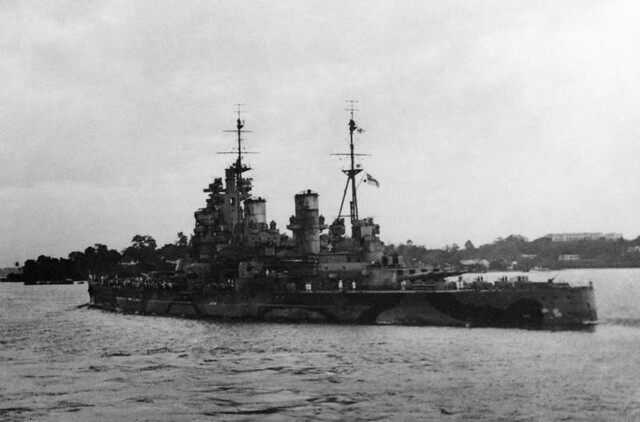
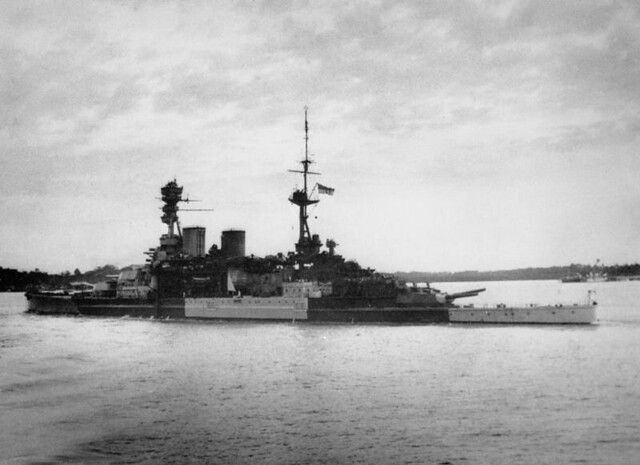
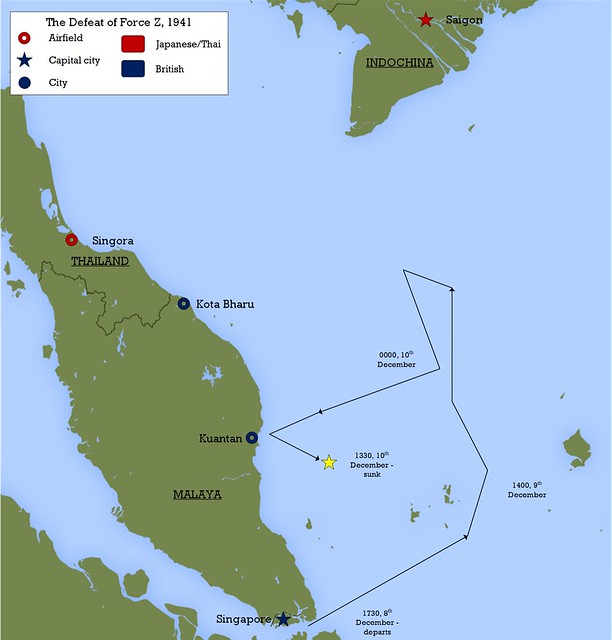
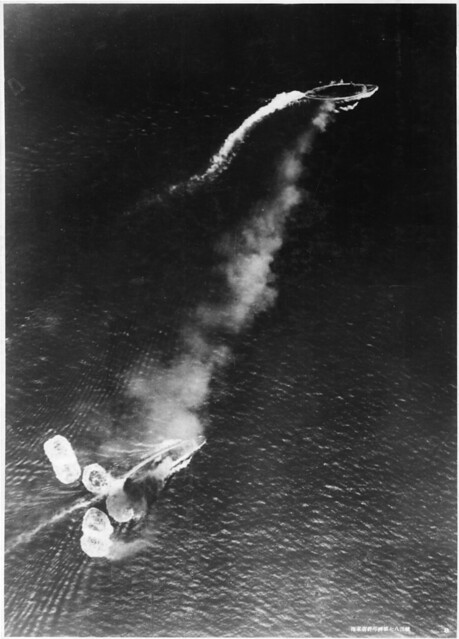
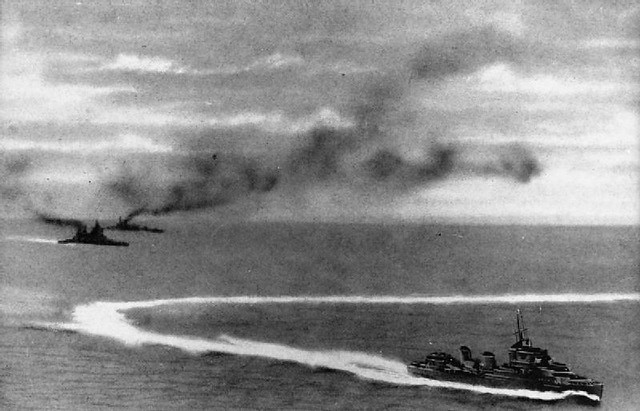

Leave a Reply